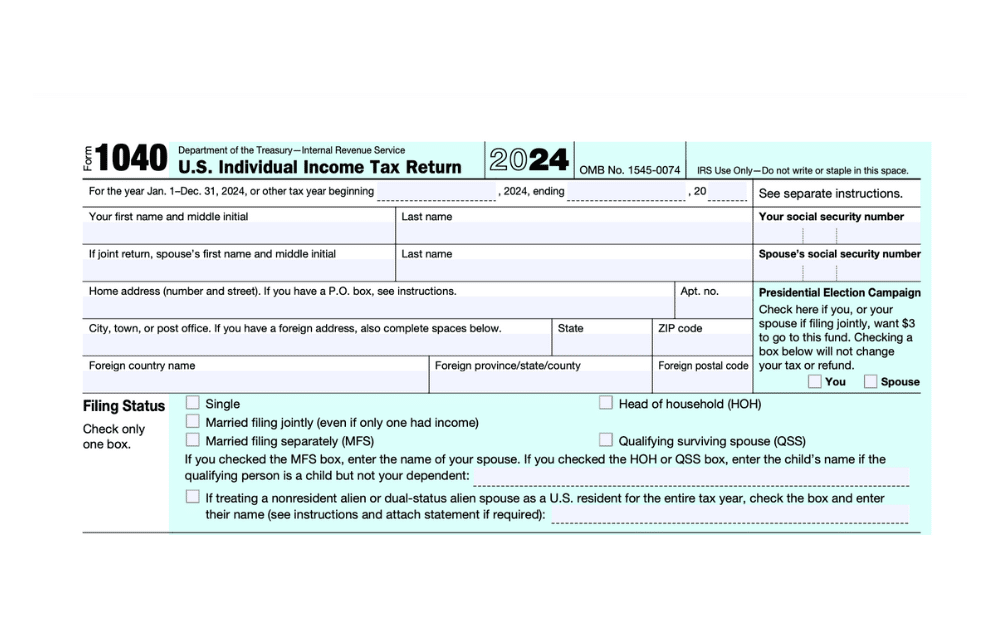Resident Alien vs. Nonresident Alien: What to Know for Tax Purposes

- What Is a Resident Alien?
- What Is a Nonresident Alien?
- Resident Alien vs. Nonresident Alien: Determining Residency Status
- Resident Alien vs. Nonresident Alien: Key Tax Differences
- Filing a Nonresident Alien Tax Return (1040NR)
- Nonresident Alien Tax Withholding
- Need Help Filing Your Resident or Nonresident Alien Taxes?
Resident aliens and nonresident aliens are subject to different tax laws based on the nature of their US source of income and their status in the US. In this guide, we will look at the differences between resident alien vs. nonresident alien taxation. Let’s get started!
Key Takeaways
- A resident alien is a non-citizen who is considered a resident of the US for tax purposes.
- A nonresident alien is a non-citizen who is not considered a resident.
- Resident aliens and nonresident aliens are subject to very different tax regulations.
- You can determine whether you are a nonresident alien via the green card test and the substantial presence test.
What Is a Resident Alien?
A resident alien is an individual who is not a US citizen but is considered a resident of the US for tax purposes. Unlike nonresident aliens, resident aliens have significant connections to the United States and are subject to US taxation in a manner similar to US citizens. To qualify as a resident alien, you generally have to meet the standards of either the green card test or the substantial presence test.
If you have spent a lot of time in the US, you may be a resident and need to file a Form 1040, which is the same requirement for US citizens. Citizens and green card holders have filing requirements to report worldwide income regardless of where they reside.
What Is a Nonresident Alien?
A nonresident alien is a person who is not a US citizen AND is not considered a US resident for tax purposes. This means that in addition to not having citizenship, they do not meet the standards of the green card test or the substantial presence test. They have only a limited connection to the US—if they have any at all. When subject to taxation, nonresident aliens are taxed according to different standards.
When you live in the US, tax day is simple: April 15th! When you move abroad, it’s not so straightforward! Learn about all the expat deadlines and extensions you need to know to file.

Resident Alien vs. Nonresident Alien: Determining Residency Status
To determine whether you’re a nonresident alien or resident alien, you must first understand the green card test and the substantial presence test. If you pass either of these, you are considered a resident alien.
Green Card Test
The green card test means that you are legally living permanently in the US and have an alien registration card, also called a green card.
Substantial Presence Test
To pass the substantial presence test, you must be physically present in the US for a minimum of 183 calculated days over a three-year period. This period must include at least 31 days in the current calendar year. However, you can’t simply add the days together. The requirements stipulate that these days be calculated as follows:
- Count all the days of the current year
- Count only 1/3 of the days in the previous year
- Count only 1/6 of the days in the year after the previous year (2 years back)
Note that it’s possible to spend 183 days in the US over a three-year period without being considered a resident per the Substantial Presence test calculation. The more days you’ve spent in the US in recent months, the more likely you are to be considered a resident alien. The general rule of thumb is that if you spend 120 days or less in the US each year over the past 3 years, then you are not taxed as a resident under the Substantial Presence test.
It’s always wise to track your time in the US, especially if you’re straddling the line between resident alien vs. nonresident alien. Spending even one day less than 183 days in the US over a three-year period could save you a significant amount in taxes.
Resident Alien vs. Nonresident Alien: Key Tax Differences
Resident aliens and nonresident aliens are subject to very different tax obligations. Understanding these differences is key to complying with US tax law and optimizing your tax bill. Let’s look at a brief overview of each.
Resident Alien Taxation
- Just like US citizens, resident aliens are taxed on their worldwide income. This means they must report all income when filing an annual tax return, regardless of where the income was earned.
- Resident aliens can also claim the same tax deductions and credits that a citizen can, provided they are otherwise eligible.
- Resident aliens use Form 1040 when filing their taxes, just like a citizen would.
- Resident aliens are typically required to file an FBAR or FATCA report if they have foreign financial accounts or assets above certain thresholds.
As a resident alien, you may be eligible for a variety of tax benefits, including the standard deduction, the Child Tax Credit, and the Earned Income Tax Credit. You may also be eligible for the Foreign Earned Income Exclusion or Foreign Tax Credit.
Nonresident Alien Taxation
- In contrast to resident aliens, nonresident aliens are only taxed on their US-source income. They do not have to report their foreign income when filing their taxes. If a nonresident alien has no US-source income, they will probably not have to file a US tax return at all.
- On the other hand, nonresidents generally cannot claim the tax credits and deductions that would be available to a resident alien or citizen. There are exceptions to this rule, however, so be sure to consult with a qualified tax professional to learn more about your options.
- Nonresident aliens use Form 1040-NR when filing their taxes.
- Nonresident aliens are typically exempt from FBAR and FATCA reporting requirements.

Filing a Nonresident Alien Tax Return (1040NR)
Understanding the US Tax Filing Process for Nonresident Aliens
The US tax season begins in the first quarter of each calendar year, with tax documents being sent to taxpayers between January and March. If you’re a nonresident alien with US-sourced income, there are several considerations to bear in mind to ensure you stay on top of your US tax obligations.
Nonresidents with “not effectively connected” (NEC) income should receive a Form 1042-S, which reports the US source income subject to tax, along with any withholding—30% in most cases, although this rate may be lower if a tax treaty applies. For those with Effectively Connected Income (ECI), you’ll typically receive the same forms US residents receive. For instance, wages earned in the US would be reported on a W-2 form. Examples of what is ECI and what is not ECI are discussed later in this article. If you receive any US tax forms during the calendar year, you’ll likely need to file Form 1040-NR.
Who Must File a Form 1040-NR?
The following individuals are usually required to file a Form 1040-NR:
- Nonresident individuals engaged or considered to be engaged in a trade or business in the United States during the year. This type of activity is known as Effectively Connected Income.
- Nonresident individuals who are not engaged in a trade or business in the United States and have US income on which the tax liability was not satisfied by the withholding of tax at the source. This typically includes investment income such as interest, dividends, rent, and royalties.
- A fiduciary for a nonresident alien estate or trust, and some resident or domestic fiduciaries for a non-resident.
Additionally, representatives or agents responsible for an individual who fits the first two categories must also file the return on their behalf.
Identifying Your US-Source Income
The source of your income and its relation to the US determines what income must be reported on Form 1040-NR. You’ll first need to identify if your income source is the US or foreign and then determine if the US source income is Effectively Connected Income (ECI) or Not Effectively Connected (NEC) to the US
For example:
- Salaries and wages earned while in the United States are considered ECI.
- Business income can be categorized as ECI or NEC depending on various factors, such as where the service is performed, where the inventory is stored or sold, or where the product is manufactured. In general, if the business activity has a strong enough connection directly to the US, it is considered ECI.
- Rents, royalties, property sales, and natural resources are all subject to tax if they are US-sourced.
- Pensions are allocated by where the service is performed, not where the individual resides.
- Scholarships and interest are typically based on residency, while dividends depend on the location of the corporation paying the dividend.
NEC income usually includes all FDAP (Fixed, Determinable, Annual, or Periodic) income from a US trade or business that is not effectively connected, such as lottery winnings or interest or dividends from a US corporation.
ECI, on the other hand, is determined by location. If you have an F, J, M, or Q visa, scholarships are considered ECI. Similarly, income from a partnership organized in the US, personal services or business operations in the US, rents received from US property, or the sale or exchange of US property are all examples of ECI.
Navigating the US tax system as a nonresident alien can be complex, but with the right knowledge and support, you can ensure you meet all your tax obligations.
Nonresident aliens who receive US scholarships or fellowship grants may be able to exclude parts of this income from US tax, depending on the terms of their visa and the purpose of the grant.
Nonresident Alien Tax Withholding
If a nonresident receives US source income, a mandatory withholding of 30% on most types of income will apply. However, there are exceptions. For example, on some sales of US real estate. However, the US has tax treaties with many countries that change the tax treatment of US source income to 15%, 10%, or even 0%. If you are a resident or national of one of the countries that have an agreement with the US, you may need to file Form 1040-NR to claim a refund of all or a portion of the 30% of tax withheld.
Think of it this way: the withholding agent does not know if there is a treaty that could alleviate the 30% withholding. To make them aware, you provide Form W-8 Ben. This form goes to the organization from which you are receiving the US source income, such as a bank, investment company, or pension provider. It does not go to the IRS. It informs the withholding agent that, because of the tax treaty, they should withhold at a lower rate.
In most cases, nonresidents with only NEC income are not required to file Form 1040-NR if the correct amount of tax was withheld at the US source. By submitting the W-8 Ben, the correct amount of tax should be withheld, so no additional steps or actions are required. However, when the withholding has not been satisfied at the US source, a nonresident must file a Form 1040-NR to calculate either tax owed or a refund.
Need Help Filing Your Resident or Nonresident Alien Taxes?
We hope this article has helped you understand the key differences between resident alien vs. nonresident alien taxation. If you still have questions, we have answers. At Greenback Expat Tax Services, we help people around the world file their US taxes accurately and on time.
If you’re ready to be matched with a Greenback accountant, click the get started button below. For general questions on expat taxes or working with Greenback, contact our Customer Champions.



